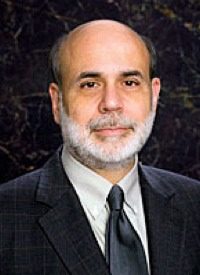
Federal Reserve Chairman Ben Bernanke is on a public relations offensive to persuade Americans that he has the economy well in hand, and that he has an “exit plan” for the Fed’s inflationary monetary policies if consumer prices should start to rise precipitously. Bernanke does see a time when banks are lending more freely, and the fractional reserve system for banks would again put additional inflationary pressure on the economy.
Bernanke wrote in the July 20 Wall Street Journal that “as the economy recovers, banks should find more opportunities to lend out their reserves. That would produce faster growth in broad money (for example, M1 or M2) and easier credit conditions, which could ultimately result in inflationary pressures — unless we adopt countervailing policy measures. When the time comes to tighten monetary policy, we must either eliminate these large reserve balances or, if they remain, neutralize any potential undesired effects on the economy.”
Bernanke and his Federal Reserve cohorts have more than doubled the size of the money supply (M1) over the past year, according to figures published by the St. Louis branch of the Fed. “We have also greatly expanded the size of the Fed’s balance sheet,” wrote Bernanke in the July 20 op-ed for the Wall Street Journal, “through purchases of longer-term securities and through targeted lending programs aimed at restarting the flow of credit. These actions have softened the economic impact of the financial crisis. They have also improved the functioning of key credit markets, including the markets for interbank lending, commercial paper, consumer and small-business credit, and residential mortgages.”
But that time of an exit strategy is still a long way off, Bernanke claims. “My colleagues and I believe that accommodative policies will likely be warranted for an extended period,” Bernanke says, meaning that he intends to continue the Fed’s inflationary policies for some time because he doesn’t believe that the Consumer Price Index will rise sharply any time soon. Of course, his past predictions have not borne out as accurate, as this YouTube video effectively demonstrates.
The time of increasing retail prices may already be upon American consumers. The Labor Department’s Bureau of Economic Statistics reported a 0.7 percent increase in Consumer Price Index in June, which is an annualized rate of more than 8 percent. More importantly, the Producer Price Index, a key indicator of imminent CPI increases, increased by 1.8 percent in June. That would be more than 20 percent increase at an annualized rate. And while most press outlets blamed the increase on gasoline price increases that have since abated, both producer and consumer costs rose across the board in the June figures.
Bernanke testifies before the House Financial Services Committee July 21. It will be interesting to see how closely House members scrutinize Bernanke’s statements.



